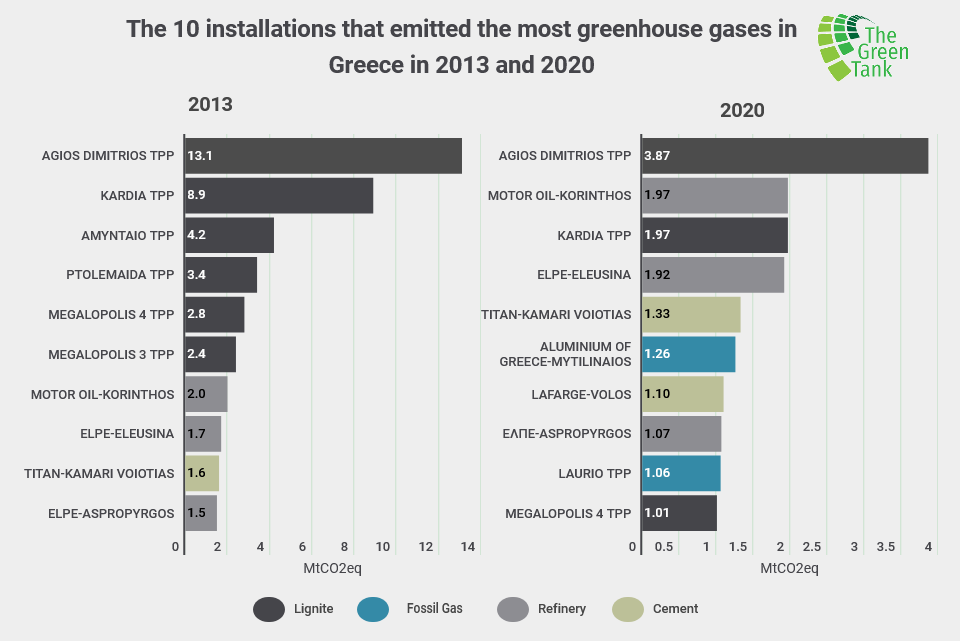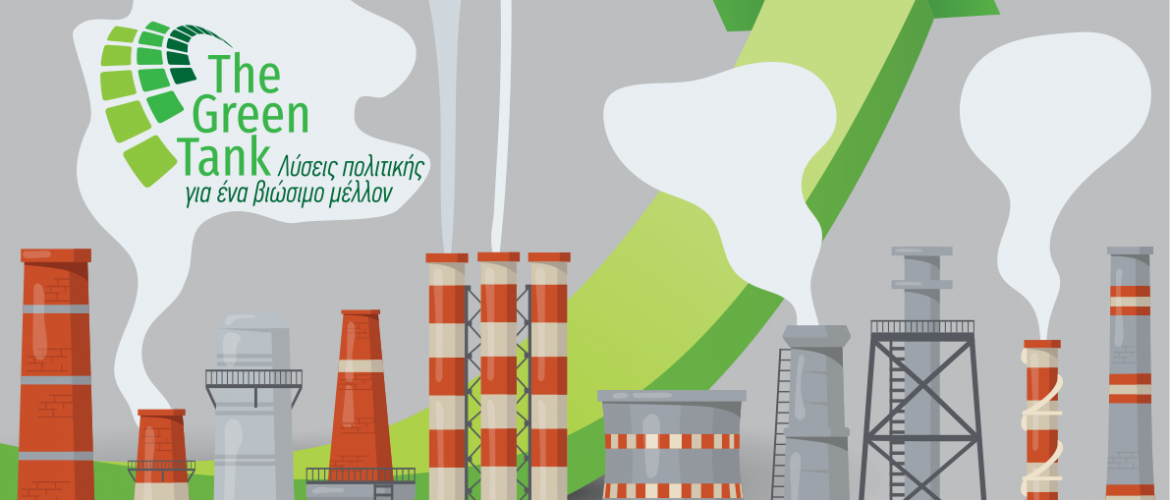As Europe prepares to revise its carbon market directive, within the framework of the “fit for 55” legislative package, the Green Tank examines what has happened in the flagship of the European Union’s climate policy, the Emissions Trading System (ETS) since its launch in 2005, until the end of its 3rd phase, in 2020.
Using official data from the European Commission and the European Environment Agency, changes in greenhouse gas emissions in the electricity & heat generation, industry, and aviation sectors during the first three phases of the EU ETS (2005-2020) at national and EU level, are analyzed.
The results of the analysis, presented in a new report by the Green Tank “Trends in the Emissions Trading System in the EU and in Greece“, highlight the effectiveness of the ETS in greenhouse gas emissions reduction, which could have been greater, had not so many free emissions allowances been granted to the energy intensive industry of Europe.
Europe
EU greenhouse gas emissions in the sectors covered by the carbon market were reduced by 42.3% compared to 2005, which is practically equal to the previous set reduction target for 2030 (-43%), demonstrating the lack of ambition guiding the EU until recently, as well as the effectiveness of the ETS in reaching climate targets.
- 1st is Denmark (-58.3%)
- 3rd is Greece (-56.3%)
- Last is Cyprus (-15.2%)
The electricity & heat generation sector has had the lion’s share of the ETS emissions throughout the years, followed by the energy-intensive industry.
The overall decrease in EU emissions occurred mainly due to the decline in emissions in the electricity & heat generation sector (-42.7%), while the emissions from industry remained practically stable throughout the period, with the exception of the last year (2020) when they were reduced by 13%.
Solid fossil fuels (lignite and coal) were responsible for 52%- 66% of the emissions of the electricity & heat generation sectors during the 2005-2020 period. In this period the emissions were reduced by 51,8%. The greatest share of this reduction occurred during the 3rd EU ETS phase (2013-2020), when the lignite and coal power plants were required to pay for their CO2 emissions, resulting in reductions of their emissions by 49.5%.
The greatest percentage reduction of emissions from lignite and coal between 2005-2020 was achieved by Belgium, Sweden and Austria, who phased-out coal completely by 2016, 2020 and 2020 respectively. Spain (-91.4%), France (-85.7%) and Ireland (-84.8%) follow, while Greece is the 1st among the lignite producing countries, reducing its emissions from 43 million tonnes in 2005 to less than 9.3 million tonnes, a 78.9% reduction.
If the trends of the 3rd EU ETS trends continue, then EU-27 and Germany will have phased out lignite and coal by 2030, while using more recent data, since the Paris Agreement, this will happen in 2026. Based on the more recent data, only Czechia, (2035), Poland (2036) and Slovenia (2052) will stop using solid fossil fuels after 2030.
Greece
Emissions from the electricity & heat sector were responsible for the greatest share of emissions in Greece in the ETS, a share that ranged from a minimum of 62.9% (2020) to 81.3% (2011).
During the first two ETS phases (2005-2012) emissions from the electricity and heat sector remained almost stable (-4.7%), while Greek industry emissions, in contrast to the stability of industry emissions in the EU, were reduced drastically after 2008 during the years of the financial crisis, noting a total reduction of 41.3% between 2005 and 2012.
On the contrary, during the 3rd ETS phase (2013-2020), the reduction in emissions from the electricity & heat generation sector was much greater (-55.7%), mainly due to the requirement of power plants to play for their CO2 emissions. The reduction rate was gradual and accelerated after 2018. On the other hand, GHG emissions from the energy-intensive industry remained relatively stable between 2013-2019 and decreased only in 2020, when the pandemic began, leading to an overall decrease of 11.2% between 2013 and 2020.
Emissions from the electricity & heat generation sector in Greece was reduced from 53.5 million tonnes in 2005 to 20.3 million tonnes in 2020 (-62%). The greatest share of this reduction is due to the drastic decline of lignite production, especially in recent years. In 2020, lignite power plants emitted 14.2 million tones less CO2 compared to 2018, mainly as a result of the skyrocketing prices of CO2 in the carbon market.
The share of lignite in the electricity & heat generation sector emissions shrank from 81% in 2005 to 46% in 2020, while the share of fossil gas increased from 12% to 39% respectively in the same period.
Greece’s 10 biggest emitters
Great changes in the list of Greece’s 10 biggest emitters in the 3rd phase of the EU ETS (2013-2020).
- While in 2013, the six (6) largest emitters were lignite power plants, in 2020 they were only three (3), and with much lower emissions levels.
- Three (3) refiners and two (2) cement unites are included in the 2020 list, and with the larger emission shared compared to 2013.
- For the first time in 2020 two (2) fossil gas units appear in the list of the 10 biggest emitters.

«Phasing out lignite places Greece in a climate leadership position. However, for this climate progress to be solidified, Greece must reduce its use of fossil gas and clearly support the green shift of its energy-intensive industry. During the upcoming EU-ETS Directive revision, brave reforms that will contribute decisively to the reduction of net greenhouse gas emissions by at least 55% by 2030 compared to 1990, not only at the EU, but also at the national level, are needed”, noted Nikos Mantzaris, Senior Policy Analyst of the Green Tank.
You can read the full text of the Green Tank report in English ““Trends in the Emissions Trading System in the EU and in Greece” and the press release.




















































































































































































































































































































